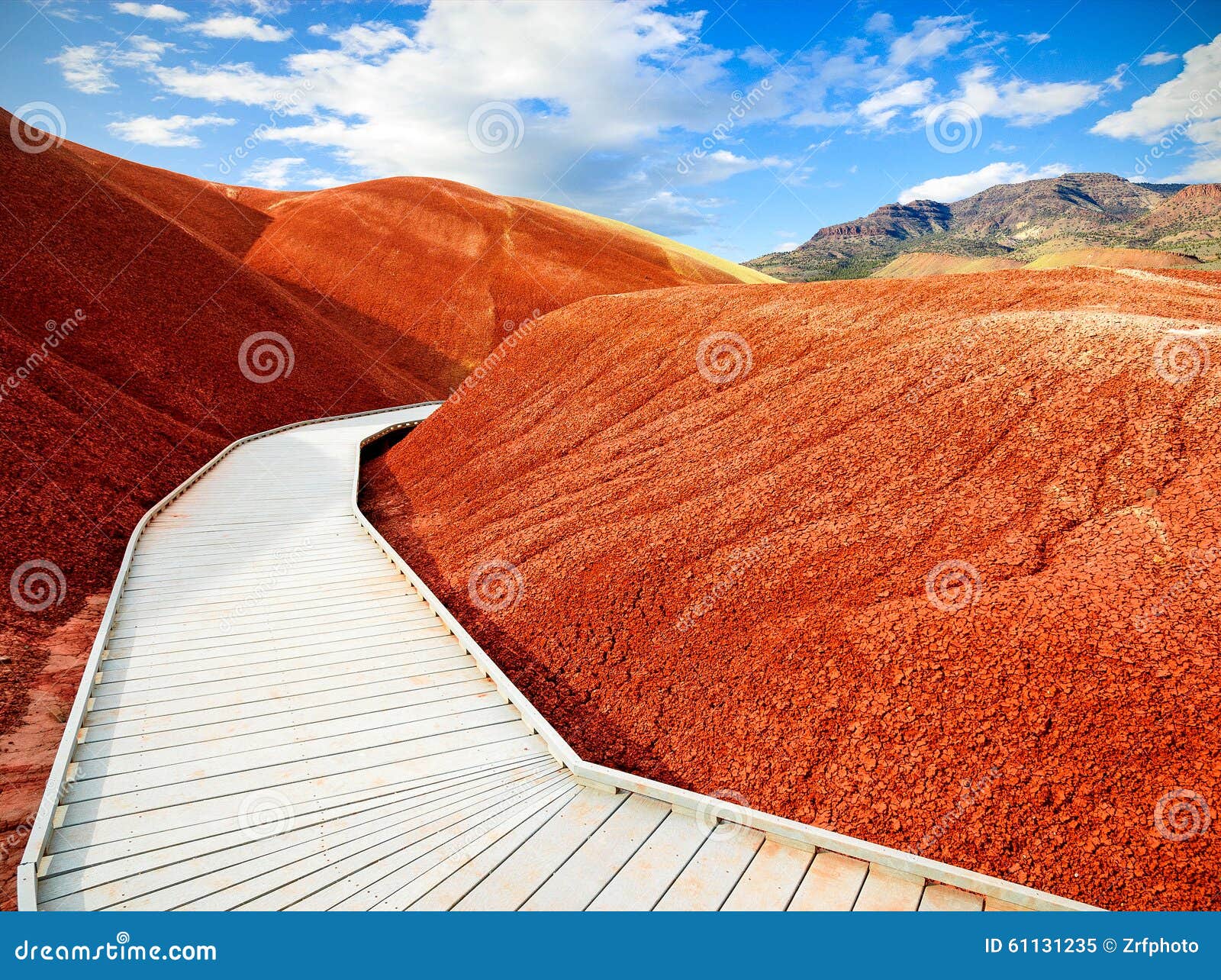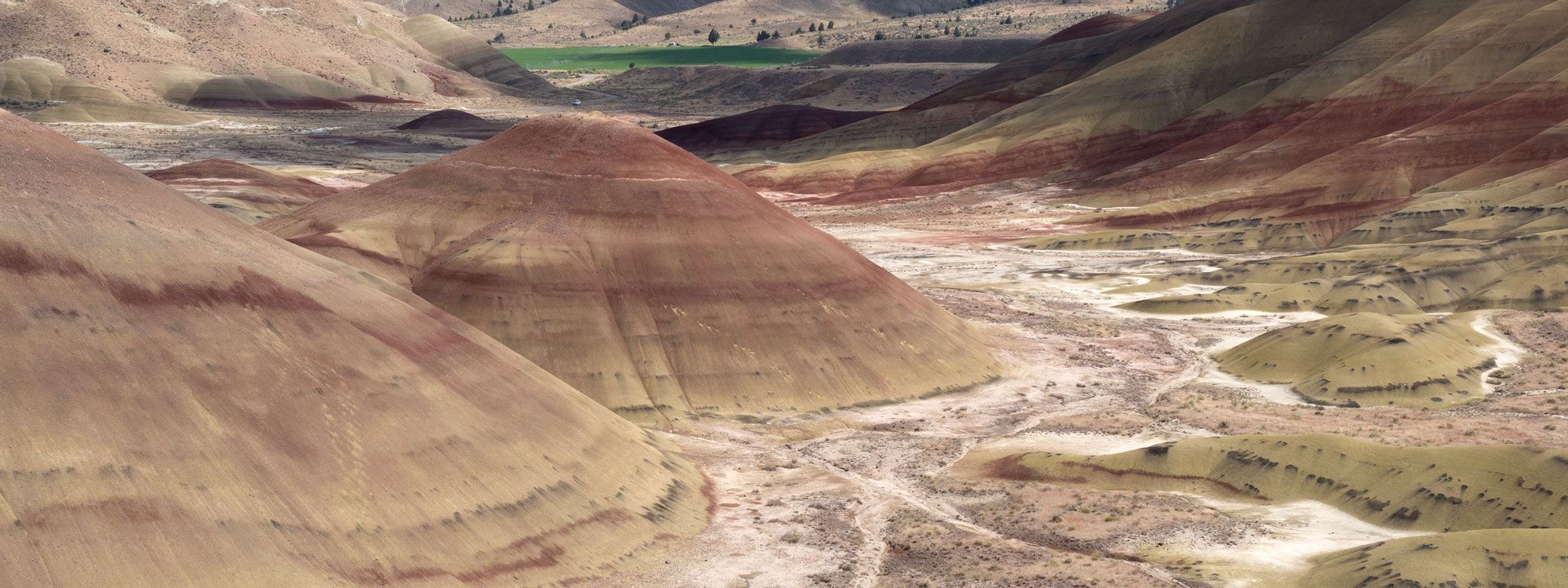Table of Content
This 0.4-mile round trip takes you out to an attractive vista of the John Day River Valley. Besides the home, guests can wander the grounds and see all the buildings that are intact such because the bunkhouse, rooster coop, and privy. The new home was built in 1917 and some rooms are open for public viewing. Vintage objects are displayed and history and daily life of Cant's household and area are defined. Across the highway stands Sheep Rock, the monument's signature landmark, and the view is great. He showed his finds to a younger minister and newbie paleontologist named Thomas Condon who became excited over what were fossils and wished to know where they got here from.

The great spangled fritillary is considered one of fifty five species of butterfly recorded within the park. The John Day Fossil Beds National Monument lies within the Blue Mountains physiographic province, which originated in the course of the late Jurassic and early Cretaceous, about 118 to ninety three million years in the past. Northeastern Oregon was assembled in massive blocks of Permian, Triassic, and Jurassic rock shifted by tectonic forces and accreted to what was then the western edge of the North American continent, close to the Idaho border. By the beginning of the Cenozoic era, sixty six million years ago, the Blue Mountains province was uplifting , and the Pacific Ocean shoreline, formerly near Idaho, had shifted to the west.
Fossils Of The John Day Area
The last major eruption occurred in the late Miocene, about 7 million years in the past. The resulting stratum, the Rattlesnake Formation, lies on top of the Mascall and accommodates an ignimbrite. The Rattlesnake stratum has fossils of mastodons, camels, rhinoceroses, the ancestors of canines, lions, bears, and horses, and others that grazed on the grasslands of the time.

Likewise, hard rock surfaces and steep slopes from which soils wash or blow away tend to stay bare. Merriam, a University of California paleontologist who had led expeditions to the area in 1899 and 1900, encouraged the State of Oregon to guard the area. In the early Nineteen Thirties the state began to buy land for state parks at Picture Gorge, the Painted Hills, and Clarno that later grew to become a part of the national monument. In 1974 Congress approved the National Park Service to determine the national monument, and President Gerald R. Ford signed the authorization.
Associated Historical Records
The monument has smaller collections of objects related to geology, biology, and historical past, and each of the units of objects is matched by related collections of technical paperwork, archives, pictures, and databases. The park headquarters and major customer heart, both within the Sheep Rock Unit, are 122 miles northeast of Bend and 240 miles southeast of Portland by highway. The shortest highway distances from unit to unit throughout the park are Sheep Rock to Painted Hills, 45 miles ; Painted Hills to Clarno, seventy five miles , and Clarno to Sheep Rock, eighty one miles . In the 1860s, northeastern Oregon's John Day Basin was prime "gold country," and many towns have been founded to help the onslaught of fortune-seekers that ensued. Then self-taught geologist John Condon found that the treasure-hunters were figuratively sitting on a gold mine of one other sort, this one historic. Nine miles west of Mitchell, off US 26, the Painted Hills Unit leaves visitors feeling as if they’ve landed on Mars.
The barren panorama is punctuated by bands of soil in vivid shades of gold, purple, black, and orange. Multiple easy trails discover the terrain, together with the Painted Cove Trail, which traverses a boardwalk set amid big mounds of rust-red claystone. More than 80 soil varieties assist a broad variety of flora within the monument. These soils stem from past and present geologic exercise as nicely as ongoing additions of natural matter from life varieties on or close to the surface. Important to many of these communities is a black cryptobiotic crust that resists erosion, stores water, and fixes nitrogen used by the crops. Volcanic tuffs and claystones that lack essential nutrients help few microorganisms and vegetation.
All photos by Kaitlin Maguire besides; two Painted Hills photos by Cindy Looy; plant drawer and skull pictures from the UCMP Archives; two historic photos courtesy of the Condon Collection, University of Oregon. We supply a compact model of Go-Oregon for cellular users, permitting you to entry just the knowledge you want on the road. Of course, you can still use the total model of Go-Oregon in your cell system simply as you probably can in your desktop. Camping - Camping just isn't allowed in any of the John Day Fossil Beds National Monument items. Cant was a Scottish immigrant who purchased land on either side of the John Day River and raised sheep in addition to a household.

The monument is divided into three models — the Clarno, Painted Hills and Sheep Rock — every with its own distinctive paleontological sources. The expansive time represented within the geology and paleontology of the park offers a superb setting to review environmental and biotic changes via time. Entrance to the park and its customer center, museums, and reveals is free, and trails, overlooks, and picnic websites in any respect three items are open during daytime year-round.
The fossils had been present in erosion exposed cliffs now referred to as the Painted Hills overlooking the John Day River. Located in Central Oregon, John Day Fossil Beds National Monument is home to the Painted Hills of Oregon. The park is damaged into three models Sheep Rock, Painted Hills, and the Clarno Unit. Derived by subtracting the sizes of the Clarno and Painted Hills items from the whole area of the park.
Scientists have estimated the fossil beds stretch throughout 20,000 sq. miles of this central Oregon space with a lot of that land privately held although explored together with the federal government holdings. The Thomas Condon Paleontology and Visitor Center are situated within the Sheep Rock Unit. Specific instances for the activities can be found from rangers on the monument.
In addition to preparing fossils, the paleontologists coordinate the monument's basic analysis in paleobotany and different scientific areas and handle the fossil museum within the visitor heart. Sheep Rock Unit, to the east of the Painted Hills , is the park's most expansive web site and one of the best place to enjoy a well-rounded introduction to the monument. While it's possible to get a really feel for the area on a scenic drive, local climbing trails are the easiest way to get an upclose have a glance at fossils in situ. The primary location to go to at John Day Fossil Beds is the Sheep Rock unit.

The Thomas Condon Center includes workplaces and laboratories in addition to exhibits of the fossils and ecosystems through time. The Painted Hills Unit is aptly named for the purple and gold great factor about the hills which can be viewed on the paths. The Painted Hills Unit is positioned 9 miles northwest of Mitchell alongside Burnt Ranch Road, which intersects U.S. Subsequent ashfall from eruptions within the Cascade Range in the late Miocene contributed to the Mascall Formation, layers of stream-deposited volcanic tuffs laid atop the Picture Gorge Basalt. Preserved in the Mascall are fossils of animals such as horses, camels, rhinoceroses, bears, pronghorn, deer, weasels, raccoons, cats, canines, and sloths. These fauna thrived in the monument's open woodland and savannah between 15 and 12 million years ago.
To the west lies the Cascade Range, to the south the Ochoco Mountains, and to the east the Blue Mountains. Many visitors select to stop near the town of Fossil, lower than 20 miles east of the Clarno Unit, to collect fossils and petrified wooden, as collection is prohibited throughout the monument. The "Ochoco country" in which the monument appears is also prime territory for rockhounds, particularly these looking for jasper and thunder eggs . The headquarters and a pair of,500-square-foot interpretive services of the John Day Fossil Beds National Monument are located at the Sheep Rock Unit, fifteen miles west of Dayville. This area contains the Blue Basin , a famend Oligocene fossil website, in addition to Miocene Picture Gorge basalts and strata of the Mascall Formation, which are about 14 million years old.

Laid down on top of the Clarno Strata, the younger John Day Strata include a number of distinct groups of layers. The lowermost incorporates purple ash similar to that uncovered within the Painted Hills Unit. Fossils discovered in the John Day Strata include a extensive variety of crops and more than a hundred species of mammals, together with dogs, cats, oreodonts, saber-toothed tigers, horses, camels, and rodents. The Blue Basin and the Sheep Rock unit include many of these same fossils, as nicely as turtles, opossums, and huge pigs.

No comments:
Post a Comment